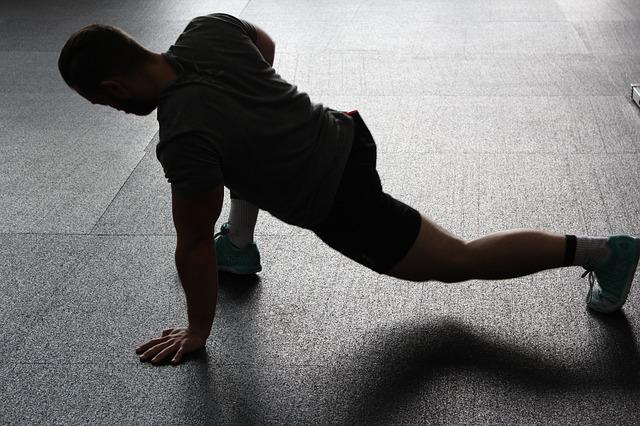Blog
Staying Active as Winter Approaches
With winter fast approaching and the holiday season in full swing, it is important to make a concerted effort at maintaining your activity levels. Even if temperatures remain more mild in Houston than other parts of the country, it is still conceivable that levels of activity will drop when the hours of daylight are considerably fewer, giving you a shorter window in which to exercise comfortably outdoors. Add to this the fact that calorie intake is higher in the period between Thanksgiving and the New Year, and you can see why winter fitness is important for preventing weight gain and combating the aches and pains that come with extra hours spent sedentary. If we are faced with spending more time inside, it is important to adjust our patterns of exercise.
- Getting creative in the house: Make the house a sanctuary of health by stretching and exercising regularly to keep the immune and nervous systems up and stress down. a
- Recreating with the family; taking the dog for a walk, going ice skating, etc. Activities that get you excited about winter rather than
- Consider indoor sports or seek out fitness programs on DVD or YouTube with exercises that can be done from the comfort of the living room.
- Yoga, for keeping the muscles toned and flexibility maintained.
- Vitamin D: Take advantage of sunny days by getting outside for walks with the family, but also use diet to keep D levels high for calcium absorption and bone health!
Furthermore, staying fit is a great way to fend off seasonal illness that can keep you bedridden and miserable. Don’t let your body fall by the wayside this winter; it is important to follow up on any fitness gains achieved during the summer. For help getting motivated, or resolving physical limitations that are holding you back, give our office in Houston a call to schedule an appointment and ensure that your body is in prime shape through the winter.
Dr. Randall Holmes, D.C.
Planking with Proper Form
We’d like to say all exercise is good exercise but the fact is that good form is essential for reaping all the benefits of a given movement and can even prevent injury from occurring. Take the plank for example: an exercise which is generally agreed upon to be beneficial for people interested in core strengthening and reducing lower back pain. From the chiropractor’s perspective, the benefit of regular planking is three-fold:
- Increasing core strength and stability
- Reducing back pain
- Increasing flexibility, balance and posture
All planks are not created equal, but a properly performed one will contract every layer of the abdominal fascia with very little movement required, strengthening the core and reducing pain in the lower back while also increasing the flexibility of posterior muscle groups. So what are the elements of a basic plank?
- Elbows directly under shoulders, wrists aligned with elbows
- Push body upward and hold chin close to neck
- Contract your abdominals and squeeze your glutes and thigh muscles.
- Hold 20-30 seconds, no longer. Rest 1 minute, repeat 3-5 times.
A helpful thing to keep in mind when attempting to find the right form is to pull in your belly button. This helps to contract the deepest layer of muscle that you are targeting and helps you get the full benefit of the stretch. Planking regularly will help you experience less pain and make sitting up straight easier. Adding a new movement into your routine should always be done with calculated consideration; at Holmes Chiropractic, we can show you the form that will help you achieve 100% benefit from every movement.
Dr. Randall Holmes, D.C.
Hot and Cold: Managing Back Pain
People who suffer from chronic back pain know that there is no magic wand for vanquishing pain- in fact, even the most proactive people, those who stretch and exercise and diet to account for their pain, can still fall victim to a flare up. While suffering through the pain is always an option, we recommend taking advantage of your resources to fight pain whenever and wherever it happens. At Holmes Chiropractic, we find that the most effective techniques for managing pain are those tried and true methods which are always worth repeating: take ice and heat, for example. The point of alternating ice and heat (in that order) is to relieve pain and induce the healing process, but it needs to be done properly:
- Ice relieves pain, swelling and inflammation. When we apply ice, a process known as vasoconstriction happens in which the blood vessels narrow, muscles flex and inflammation is reduced. We recommend applying an ice pack (or an ice towel) to the affected area for 10-15 minutes 3 times a day, and particularly after exercise.
- Heat is effective at encouraging muscle relaxation and stimulating the healing process. Heating an injurious region essentially does the opposite of icing: through vasodilation, the blood vessels are opened, allowing an influx of healing nutrients and oxygen. Remember that moist heat is superior to dry heat and to apply it for 15-20 minutes at a time to achieve pain relief.
Remember that while resting, icing and heating is important for pain relief, so is movement! Movement is an effective medicine for healing because it fights the stiffening and aching of muscles that accumulates when we stay still for hours at a time.
Dr. Randall Holmes, D.C.
Stress Management
When your resolve is tested, how do you respond? Even your dream job would cause you stress at some point, and we all usually face the quandary of too much work and too little time. Stress treats everyone differently but the best thing anyone can do is to arm themselves with techniques for managing the symptoms and minimizing the causes. What do I mean by minimizing the causes? Well take breakfast for example: the cycle of stress starts before you even walk out the door, with the anticipation of the day to come. If you skip breakfast, or opt for something insufficient such as coffee and a croissant, you are not giving your body or brain the fuel necessary to perform under pressure and it sets a bad precedent for the rest of the day.
Techniques for managing stress on the job:
- Micro-breaks: can you spare 2 minutes to take a brisk walk to the water fountain?
- Making lunch hour sacred: in other words, get away from your desk.
- Chewing gum or something crunchy like an apple: chewing decreases anxiety, while the rhythm and sound increase relaxation.
- Green tea > coffee: coffee can increase anxiety while green tea has a chemical called L-Theanine which inhibits anger and promotes relaxation.
At Holmes Chiropractic, we have a multitude of techniques that help with stress management. Mental stress often causes us to tense up and this can be felt most often in the shoulders, neck and back. Chiropractic treatment seeks to correct spinal imbalance, and release tension with hands-on technique. By regulating the nervous system, we help to treat not only physical dysfunction, but also encourage fluid communication between the brain and body, to help you feel both more relaxed and more productive. While stress accumulation can be rampant, it doesn’t have to define your waking or working life; for help on removing yourself from the turbulent cycle of stress, give our office in Houston a call to schedule an appointment today.
Dr. Randall Holmes, D.C.
Hamstrings
Proper posture is under fire: more jobs require humans in front of computers, more humans seek entertainment from their personal computers, more time is spent commuting and there seems to be less awareness than ever regarding posture and its pitfalls. A region that flies under the radar when it comes to posture is the hamstring. Sitting for hours on end leaves them in a state of perpetual contraction that causes them to shorten and, consequently, pull on the pelvis leading to destabilization of the lower back and misalignment in the lower vertebrae. But how are you to know if your indiscriminate, seemingly chronic back pain is caused by a problem originating in the legs? Try a quick test:
- Sit on the floor with one leg and foot extended, the other folded in the butterfly position.
- Press down on the folded knee and reach for your toes
Can you touch? If not, then chances are your hamstrings are tight and this means different things to everyone. Some people have no problem at all but for others it affects their posture, creates pain and limits movement. At Holmes Chiropractic, we use spinal adjustment to solve any resulting misalignment and work on alleviating nerves from painful compression. From here, we use targeted stretching and strengthening to release the region from tension and prevent future problems. Posture can feel like an uphill battle, but the upside is undoubtedly worth it. Let us help you find some inspiration by calling our office in Houston to schedule an appointment today.
Dr. Randall Holmes, D.C.
Keeping Tension at Bay
Of the approximately 640 skeletal muscles in the body, it is very likely for most people that more than a few of them may be experiencing tension at any given time. Factors that put muscles under stress include:
- Exercise
- Inadequate sleep
- Poor diet
- Poor posture and too much sitting
- Mental exertion
I would like to focus on the first factor, exercise and how it (or the lack thereof) can create tension in the average body. At Holmes Chiropractic, we want people to focus on the three categories of exercise that are most essential to longevity and well-being:
- Cardiovascular exercise
- Strengthening
- Stretching
Anyone who has gone biking for significant mileage can imagine the tension of muscles that builds up quickly between the shoulder blades, affecting the function of the upper back, shoulders and neck; it results from hunching over your bike for miles on end and it hurts. But a smart person would still do the exercise knowing that they are building muscle rather than losing it to atrophy by not exercising at all. At the same time, the cardiovascular quality of the exercise is nourishing muscles by providing them with a steadily refreshing flow of oxygen and boosting circulation. This defeats the build up of lactic acid that results from low oxygen levels and causes painful knots to develop in the back. If you can remember to stretch (before and after) then you are completing the fitness triangle by lengthening muscle and connective tissue and keeping them toned, and also relieving any tension that may have resulted during the exercise.
Exercise is a personal choice and you need to pick the activity that makes you happiest to keep yourself coming back for more. While everyone can use more strength, it is secondary in comparison to the body’s need for cardiovascular exercise and stretching. Regular chiropractic treatment is a valid augment for anyone looking to begin or maintain a fitness plan; adjustments resolve nervous system interference that results from spinal misalignment, and can cause muscle tension in and of itself.
Dr. Randall Holmes, D.C.
Athletic Performance
For athletes in the Houston area looking to improve on their personal best or gain a hand up against the competition, it could be worth adding the power of chiropractic as an augment to your repertoire. At Holmes Chiropractic, we use chiropractic theory and practice to help athletes of all ability levels reach toward their true potential. Chiropractic seeks to facilitate better communication between the brain and body, so that you can trust that you are leaving it all out there during your athletic endeavors. Here are some of the ways we help you succeed:
- Healing faster: injuries are a part of any sport, but the amount of time they take out of your training is variable depending on the kind of support you receive. We are specialists in the biomechanical form and can help you with hands on technique including chiropractic adjustment, trigger point therapy, spinal decompression and other modalities to help you return to the playing field
- Range of motion: a key to preventing injury is making sure your body can bend without breaking.
- Improved lung capacity: subluxation in the cervical region can create interference with the diaphragm, limiting the potential of your respiratory system. Every cell in the body needs a constantly refreshing source of oxygen to provide you with the oxygen you need to sustain and excel.
- Muscle building: chiropractic ensures that your muscles are contracting and releasing smoothly, a process that is started when motor neurons in the brain send a signal down the spinal cord to the muscle. The easier this is, the more efficiently muscle builds.
At our office in Houston, we serve as a sounding board to help you set fitness and lifestyle goals and overcome physical or mental limitations that may be holding you back. If you are interested in maximizing your athletic potential, give our office a call to schedule an appointment today.
Dr. Randall Holmes, D.C.
Breathe Easier
Fact: every cell needs a constantly refreshing supply of oxygen to perform cellular respiration and provide your body and biological systems they need to keep moving forward. Getting this oxygen to the cells is a complicated process that our body takes care of for us: in fact, humans take in breath around an average of 20,000 times a day. The diaphragm is the unsung hero of the breathing process which may have a legitimate claim for the title of most important muscle in the body. The sheet of muscle that separates the thorax from the abdomen is the main power source for the respiratory system and it intakes oxygen in the following way:
- Expanding the rib cage through positive intra-abdominal pressure
- Expanding the rib cage, using the abdomen as the fulcrum
- Decreasing intrapleural pressure, which determines whether or not air moves into the lungs.
Accessory muscles in the breathing process, including the abdomen are also important, but not quite as essential as the diaphragm for drawing breath. Potential causes for diaphragm dysfunction that can be treated by the chiropractor include:
- Interference with the phrenic nerve, which exits from the spine between C3 and C5
- Poor posture
- Improper breathing technique
- Weakness of accessory muscles
Breathing properly means better circulation, helping oxygen enter the blood stream easier and for carbon dioxide to leave more efficiently. The diaphragm should be accountable for 70-80% of each breath drawn and to this end, dysfunction should be prevented. At Holmes Chiropractic, we can help you learn the essentials of proper breathing, which rest heavily on posture, help you to tone the muscles involved and address any spinal imbalance that may be interfering with the function of the phrenic nerve. Give our office in Houston a call to schedule an appointment today!
Dr. Randall Holmes, D.C.
A Riddle for your Friday
I am lighter than a feather, yet the strongest man couldn’t hold me for much more than a minute. The answer: breath. Breathing is our most innate activity, and most of us will draw a breath (on average) 20,000 times a day until our last. For such an automatic bodily function, it is a constant source of wonder that people simply don’t do it correctly. Poor posture, stress and tension, lack of abdominal strength and pure lack of awareness are some of the top reasons why people don’t draw breath effectively, and it definitely creates a dearth in their well-being.
At Holmes Chiropractic, we focus on teaching people how to coordinate the function of the diaphragm and the abdomen, and all of the accessory muscles in drawing a proper breath. Why, you ask? because nothing is more essential than oxygen for the human body. Every single cell needs to respire in order to stay alive and produce the energy needed for all the functions and systems of the body to work for you throughout the day.
- Addressing abdominal weakness: weak abs means less lung capacity.
- Teaching proper breathing technique: breathing through the nose, using the diaphragm for 70-80% of the breathing movement, and encouraging proper oxygen exchange. We can show you how in office.
- Resolving spinal misalignment: nerves exiting between C3 and C5 power the phrenic nerve which is the main nerve input for the diaphragm. Pressure on any of these nerves can cause dysfunction in the diaphragm.
Finally, negating the negative feedback cycle of poor posture and poor breathing: a hunched over posture will not allow your rib cage or thoracic cavity to open properly and capture the right amount of air. There are innumerable ways that breathing better will help you lead a better life; start breathing better today by calling our office in Houston to schedule an appointment.
Dr. Randall Holmes, D.C.
Spinal Instability
Spinal instability is a term that describes the presence of abnormal movement between two vertebrae. As we age or injure ourselves through different kinds of traumas, our discs degenerate and lose tension, which allows more movement to take place between the vertebrae. Furthermore, the facet joints located on the back of the spinal column, become displaced and arthritic, causing the production of bone spurs around the margin of the joints.
Symptoms of spinal instability include back pain, muscle spasm, and limited range of motion, among other things as the pain is caused when normal flexion and extension movements cause the vertebrae to articulate abnormally. Most often, the associated spinal nerve will be right in the firing line, and the irritation of this nerve is what will send pain signals to the brain.
A common response for treating spinal instability is surgery, but the condition can be managed with chiropractic as well. Because the condition is caused by the vertebrae falling out of alignment, there is a lot we can do to prevent the instability from getting worse and actually help restrengthen the region and restore some semblance of balance.
- We focus on the surrounding muscles: strengthening compromised muscles so that they can lend support to the unstable region, and treating sore muscles with massage and trigger point therapy to keep the tissues of the lower back in good shape.
- Encourage weight loss: every excess pound is going to complicate the problem further. Through nutrition and exercise, we can help you reduce the burden that is placed on the unstable region.
- Correct spinal misalignment (subluxation)
- Encourage lymph flow out of the injurious region.
An improvement of symptoms through chiropractic is a great indicator of success for surgery. Spinal instability is a serious condition and should be treated as such; before any steps are taken, you must have a full picture of the condition you are facing. At Holmes Chiropractic, we offer you our services in the detection and conservative treatment of spinal instability.
Dr. Randall Holmes, D.C.









